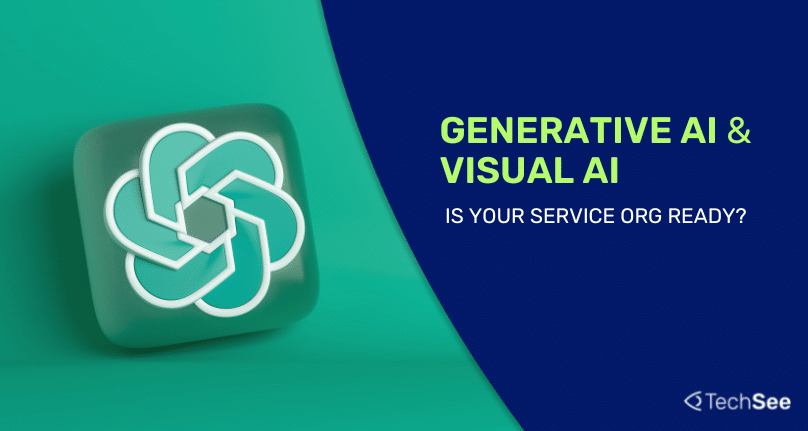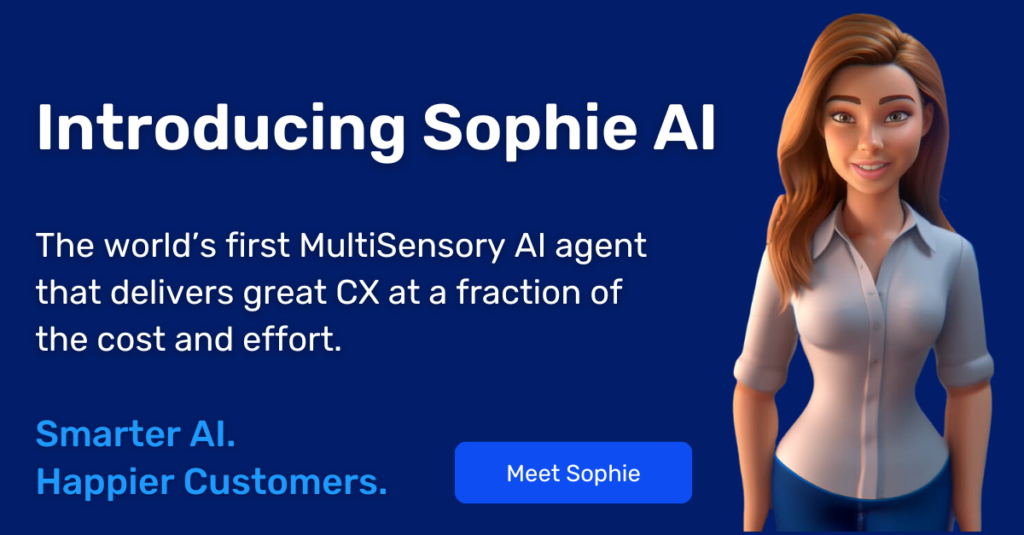Contents
The technology industry is abuzz with the latest breakthroughs in artificial intelligence. Primarily due to OpenAI’s heralded debut and innovative approach to packaging, they are making their latest technology easily accessible to the masses. For the first time, early technology adopters can now easily access the latest breakthroughs in Generative AI. Generative AI is a rapidly emerging technology class that automatically creates content, such as code, images, or text. Many wonder how AI will impact their business, team, or operations. In this post, we will examine the role and implications of Generative AI in service organizations, the practicality of this technology, and the strategies you should consider today and tomorrow.
Please note that parts of this post were informed and partially written by ChatGPT. Can you tell which? Neither can our editors. That in itself raises a number of questions we will cover later in this post.
The Role and Implications of Generative AI
Service organizations have been deploying artificial intelligence such as chatbots for over a decade to scale up and expedite their service solutions for consumers, agents, and field technicians. Early chatbots were extremely limited, serving primarily as another way to interface with user guides and help center content. While early indicators showed signs of promise, end-users rarely found these chatbots to be more helpful than traditional support channels.
Over the last couple of years, the growing field of conversational design and the evolution of intent-based and more recently intent-less chatbots have advanced chatbot functionality and utility. However, the complexity required to automate chatbot-based support has resulted in limited improvements in digital service containment rates.
Unlike traditional flow-based AI, the large language modeling behind GPT3.5 (the engine under the hood of ChatGPT), Bard (powered by LaMDA, from Google), and others promise to be able to understand user intent, scrutinize all available documentation or information, and provide contextual answers to every user query. Humans can now theoretically speak with the Generative AI chatbot using their own words. The chatbot will similarly reply with human-like AI-generated text processed by a “brain” that can process billions of words per second.
A hyper-smart chatbot should represent a foundation-shaking breakthrough in user, agent, and field technician support, enabling automated guidance that works as promised. Ideally, this could result in far faster service, better self-service containment rates, improved adoption of digital self-service channels like chatbots, and reduced demand for call center solutions.
Is Generative AI for Service Too Good to Be True?
In a word, maybe. Below are a few considerations you should consider when gauging whether or not Generative AI will change your service organization – at least over the next 18-24 months.
-
Confidence Does Not Equal Accuracy
While the latest generation of ChatGPT (as of February ‘23) writes with incredible confidence, the information provided is not always accurate. From our own experimentation, we found the “large language models” used to train the AI can contain factual errors. It may be because the AI typically doesn’t have access to the most recent factual information. Then again, there are instances that the AI may misunderstand the source information or “misspeak” with translating this information into text guidance for the end user. Unlike highly structured chatbot interactions, Generative AI requires some creative license when communicating with users to provide a natural-feeling response. While this technology will undoubtedly evolve, trusting your customer service to AI can result in a frustrating and costly user experience should the AI provide the wrong information, poor guidance, or even offend the end user.
Practical Implications
Due to the communications fallibility, I recommend notifying users that they are interacting with a new, AI-based channel and welcoming their feedback on the experience. Allow users to escalate from the AI-based service experience to a live agent to handle errors or issues and have management evaluate where the AI is most and least effective. -
Vision Trumps All Other Senses
Have you ever tried helping a non-technical friend, neighbor, or relative fix their WiFi or printer? It can be tough to understand their issues based on their verbal descriptions. I experienced this myself just last week. While I love my parents, it is hard to know what they mean when they say, “I plugged in the thingamajig into the side, but the little lights are still all on.” Even the most advanced Generative AI would struggle to understand what my parents are describing. Credit to John Medina for putting this so succinctly when he wrote in Brain Rules: “Vision trumps all other senses.”Vision is why 99% of call center agents with access to TechSee Live’s visual service platform report that they notice improvements in their performance. A picture is often worth more than just a thousand words, especially when the customer lacks the language to describe their issue. Similarly, augmented reality tools allow contact center staff to guide end-users to full issue resolution visually. Seeing the situation creates contextual understanding far faster than hearing a description or reading an explanation.
Practical Implications
Whether using text-based AI or more traditional chatbots, integrating customized visual AI allows you to automatically see, understand, diagnose, and visually guide users to complete resolution. The superior automated service of the future will not rely entirely on a single AI solution but a hybrid of best-in-breed text-based and visual AI solutions. For example, last year a leading US-based communications provider integrated our Visual Intelligence (VI) platform into their personal assistant. VI allows their virtual assistant to visually confirm the device make and model, guide users through device setup, and troubleshoot connectivity issues. With hundreds of thousands of visually immersive setups and support sessions complete, this is no longer a future vision but the present reality for the company’s customers across the country. -
Make Sure Your Users Are Ready for AI-Based Support
Multiple studies have found that consumers, agents, and even field technicians prefer the immediacy of an AI-based, automated service to holding on a call for live support or escalation. However, this comes with a substantial caveat: People strongly prefer automated, AI-based support when it can resolve their issues. If you are not confident that the AI is capable, consider where and how it can best be utilized and start automating only those service interactions. With that said, not all audiences are equally open to AI-based support. If you offer a premium or concierge-style product or service, your users may not appreciate the impersonal nature of the AI-based service. Similarly, users who are not early-technology adopters (i.e., the elderly) may not be as open to using AI-automated services.
Practical Implications
The best way to determine what your users want is to ask them, run tests, and experiment. Conduct user groups to test the technology and gather feedback. Monitor progress and user satisfaction during the initial rollout. Collect quantitative success metrics and user feedback that will help you understand where and why the AI works, where it doesn’t, and how you can improve the interaction. -
Consider a Hybrid AI+Human Approach
Just because Generative AI looks like and may well be a service breakthrough doesn’t mean that you can or should shift substantial resources away from your other service teams. There will be scenarios where AI works very well, helping users fully resolve their issues without manual intervention. However, there will also be occasions where the AI won’t provide a reasonable or satisfactory resolution. There will likely be many instances in which AI can offer a partial solution and then engage a human asset to quickly and efficiently provide a final reconciliation. For example, Generative AI, combined with visual AI, can effectively collect essential information from users and potentially even diagnose the likely root causes of issues. Similarly, this hybrid AI solution will be well suited to walk users through basic visually-guided troubleshooting.
However, should more advanced troubleshooting or issue guidance be required, strive for proper service continuity by offering a seamless and efficient hand-off to your support staff, who can deliver superior advice. In the example above, your contact center staff should easily access the customer’s self-service journey information, including the steps the user has completed and the AI-identified make, model, and issue. The AI can even suggest additional steps the agent should consider to help the user solve their problem. By doing so, the AI has effectively expedited the agent’s AHT (average handle time) while saving the user the frustration of repeating previously-completed steps.
Practical Implications
Test when and where each AI solution is best suited to help users both on a technical and user-satisfaction level. Then you can decide how AI fits as a stand-alone or partial solution that can augment your support staff, providing faster and more satisfactory resolutions. -
Walk (and Learn) Before You Run
Getting started with Generative AI and visual AI should not require a dramatic overhaul of your entire service organization. Allow these innovations to be implemented in limited environments to learn, measure, and adjust your strategy. We are in the early days of a new technology still maturing and evolving. Innovation isn’t a zero-sum game, with the impact measured in many ways. There is no time like the present to start experimenting with these technologies. Start with something relatively simple, like using Generative AI and visual AI to collect essential information from a customer before an agent comes on the line. These small steps often provide a safe space for experimentation without disrupting end users or support resources. Make sure every experiment has a practical and measurable objective, with a plan for what comes next with success. Whether your goal is to learn more about the technology or its impact on your operations/service performance, consider how you will measure your success and learn from your mistakes. Similarly, plan for what comes next. If the technology meets your initial performance expectations, where will you go from there? Do you have your leadership on board? Is your organization ready to take the next step?
Practical Implications
When planning your first foray into any new technology like Generative AI or visual AI, strategically consider the initial engagement. The goal of your first step should be to generate the insight and momentum needed to drive further investment, rollout, and impact. Make sure you have considered:- the cost of deployment in both resources and operational disruption
- the practical KPIs you want to impact, and how they will be measured, reported and optimized
- how you can generate executive visibility, interest, alignment and support
- how you can learn from and leverage your first steps towards a long and lasting impact for your organization
To learn more about TechSee’s visual service AI and how we can help automate your solutions, schedule your complimentary consultation today.







